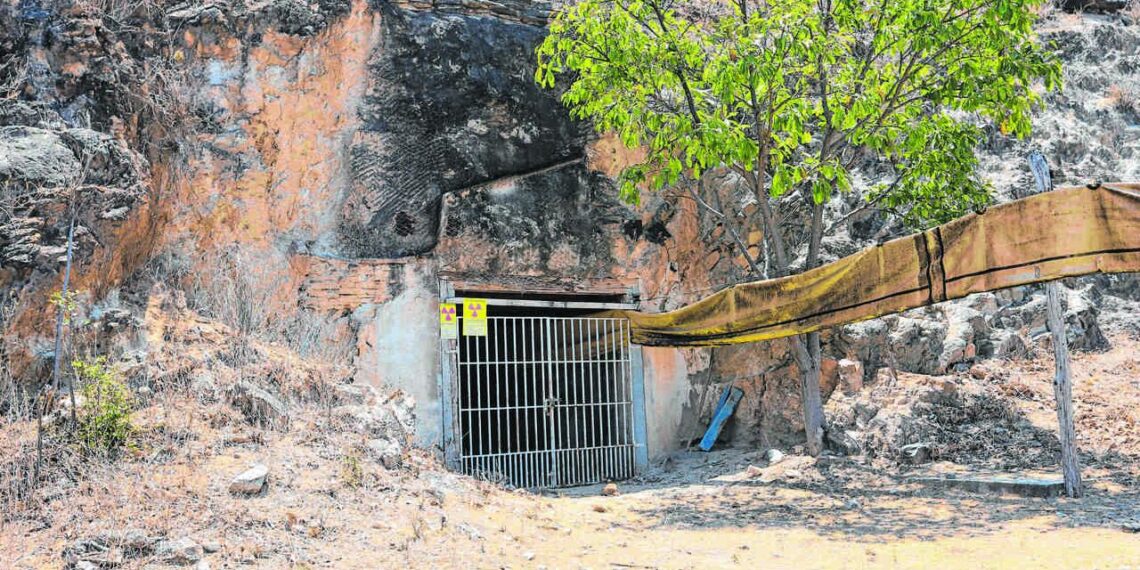RIO DE JANEIRO, BRAZIL – The permitting process for what is currently Brazil’s largest uranium exploration project, the Santa Quitéria project in Ceará, is getting back on track.
In this new round of analysis, the public hearings have already been approved by Ibama (Brazilian Institute of Environment and Renewable Natural Resources). The debates are scheduled to occur in the next three months and promise to be intense.
The project is located between the municipalities of Santa Quitéria and Itatira, 217 km from Fortaleza. It foresees an investment of R$2.3 billion (US$500 million) and the creation of 11 thousand of jobs for the exploration of a rich uranium deposit combined with phosphate, a raw material for the fertilizer and animal feed industries.

Social movements, indigenous peoples, and researchers have opposed the project. The group has produced studies and statements highlighting the risks of radiation exposure, held events on the issue, organized demonstrations, and some members have even gone to the offices of members of parliament in Brasilia to urge them to speak out against the plan.
These critics directly conflict with Jair Bolsonaro’s (PL) government, which has placed uranium mining on its list of priorities. In 2019, an ambitious plan was launched to build six nuclear power plants by 2050 with an investment of R$30 billion.
The Angra 3 project was saved. Recently, Thiago Barral, president of EPE (Energy Planning Company), defended the use of small reactors to support the energy transition in the country.
The Minister of Mines and Energy, Bento Albuquerque, is a proponent of nuclear energy and has worked to make the agenda feasible. The government has succeeded in bringing the Caetité mine in Bahia, which has been shut down for five years, back on stream in 2020. The Santa Quitéria deposit is of strategic importance in this plan.
In Brazil, the state has a monopoly on exploring and processing radioactive materials, which are also considered national security. The state-owned company INB (Nuclear Industries of Brazil) is responsible for representing the government in the operation of these materials. It will be responsible for uranium processing in Santa Quitéria.
According to Rogério Mendes Carvalho, director of mineral resources at INB, the project will put Brazil on a new level of uranium production.
It is estimated that 2,300 tons of concentrate will be produced there annually, three times more than the national demand, already considering the additional needs for the Angra 3 operation. Today, Brazil has to import uranium.
Phosphate, in turn, is a raw material for fertilizers, and expanding its production is part of the national plan for the area launched by the government in March.
The private company Fosnor, Galvani’s subsidiary for transporting and handling fertilizers, will be responsible for phosphate products.
The project is projected to meet 3.5% of national phosphate fertilizer consumption and 23% of demand in the northern and northeastern regions, including the Matopiba area, the new frontier agribusiness area, and provide bicalcium phosphate for animal feed.
FEAR OF CONTAMINATION IS HIGH IN LOCAL COMMUNITIES
None of this, however, diminishes the distrust of those who live in the deposit region. “They say this project will bring jobs and development, but it can also bring death, and it robs us of sleep,” says Aroerê Tabajara, who has taken the name Elvis and lives in the village of Olho da Guinha, which lies within the project’s sphere of influence.
In this region, there are 35 villages with eight ethnic groups. In addition to the Tabajara, there are also representatives of the Potyguara, Gavião, Tubiba-Tapuia, Kanindé, Karão Jaguaribara, Anacé and Tapeba.
There are also 16 quilombos and several small rural estates. The seat of the community is 62 km from the mine.
With information from Folha

